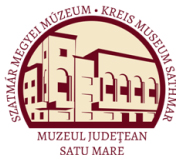Marta, Liviu: The Late Bronze Age Settlements of Petea-Csengersima (Satu Mare, 2009)
VI. Annexes
Pottery shape Pasié Decoration type Pottery type No. of elements Plate cup f GA,HB 1A 1 5/10 cup f 1 1 5/11 cup s LP,LN,HB lAa 1 5/12 dish c 4B 1 5/13 tray c 2 1 5/14 p. cooking v.s AH 1 6/1 p. cooking v.c 1 6/2 pot c lAb 1 6/3 pot c 2B 1 S7 Complex 3 (Fig. 3, 4). — A pear shaped pit with quasi-circular outline (125 x 130 cm) occurred at the base of the cultural layer, 91 cm under the outline. The arched sides widened 10—20 cm towards the flat base. The maximum depth of the pit was 49 cm and the fill was dark grey. Inventory: 78 pottery fragments that originated from 19 vessels, 4 pieces of daub. 3 fragments that originated from two vessels had incised-excised decorations. Date/culture: Lăpuş II—Gáva I. Pottery shape Paste Decoration type Pottery type No. of elements Plate dish f 2Ac 1 6/4 cup f IA 4 1 6/6 f IE 1 6/7,8 cup f JB 1 6/9 f 1 f IE 1 p. cooking V.c 1 storage v. c AA 1 S7 Complex 4 (Fig. 3, 4). — A (post) pit with quasi-circular outline (50 x 60 cm) occurred at the base of the cultural layer in 90 cm depth. The walls were arched. The base was convex. The fill was darkgrey and the maximum depth was 18 cm below its outline. Inventory: 26 pottery shards and 9 pieces of daub; 1 fragment of a pot rim (PI. 6/10), 3 fragments that originated from a vessel with a black outside and brick red coloured interior. It is likely that a shard decorated with incisions from this pit was in secondary context as it was the only one that was hard fired. Date/culture: The 3 red and black pottery fragments which were specific to the Lăpuş II—Gáva I horizon were likely to date the complex. 57 58 Pottery shape Paste Decoration type Pottery type No. of elements Plate f IB 1 6/10 pot s 2A 1 6/11 57 Complex 5 (Fig. 3, 4). — A pit in the southern side of the section was partially excavated. It occurred at the base of the stratum in 90 cm depth. A 103 cm long and 42 cm wide semicircular segment laid within the confines of the trench. The sides were asymmetrical; either perpendicular or slightly inclined in and outward. Its base was rather flat and laid in 35 cm depth. The uppermost fill of the pit was grey and dark brown in the middle containing inclusions of charcoal and daub grains. Inventory: 7 pottery fragments that originated from 4 vessels, 2 pieces of daub. The presence of three pottery fragments, black on one side and brick red on the other make it likely that the pit can be assigned to the cultural horizon Lăpuş II—Gáva I. Sector S8 (11 x 4 m, 44 m2, Fig. 3, 4). 58 Complex la (Fig. 3, 4). — Dwelling structure? A daub platform occurred in the upper part of the cultural layer, 30 cm under its contour. Its maximum thickness was 20 cm. The daub spread over a square area, on a surface of 340 x 340 cm. In the southern side, the clay platform came out from the investigated surface, indicating the north-south orientation of the longer sides of the construction. The fragments of fired walls preserved the traces of pile impressions (including parallel piles) and 108
